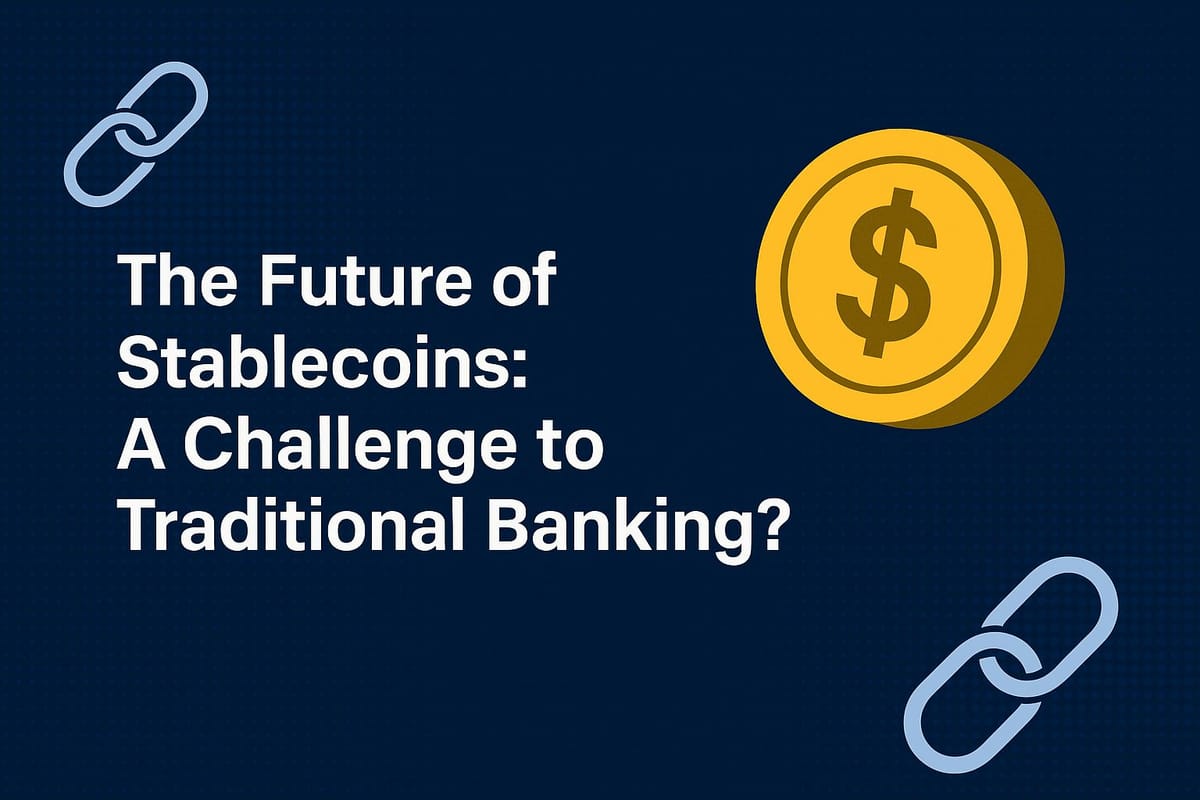The Future of Stablecoins:A Challenge to Traditional Banking

Stablecoins are cryptocurrencies pegged to stable assets like the U.S. dollar, they are rapidly becoming a cornerstone of modern finance. With a combined market cap of 250 billion in 2025, led by Tether (USDT,143B) and USD Coin (USDC, 58B), they processed over 27.6 trillion in transactions in 2024, more than Visa and Mastercard combined. Their momentum is undeniable, but their rise raises key questions about the future of banking.
Fast-Growing Market Expanding Use Cases
Since 2019, stablecoins have grown 45x, with forecasts pointing to a 2.8 trillion market by 2028. Their 1:1 fiat peg offers price stability, unlike crypto assets like Bitcoin. While USDT and USDC dominate, new entrants like PayPal’s PYUSD highlight growing institutional interest. USDC’s integration into banking infrastructure such as Circle’s collaboration with Matera signals deeper alignment with traditional finance.
Real-World Financial Utility
Payments: Stablecoins enable near-instant cross-border payments for less than 0.01 far cheaper than SWIFT’s 25–50. Businesses like Revolut report 1–3% savings on FX fees.
DeFi: With 625 billion in monthly DeFi volume, stablecoins fuel lending (2–5% APY on Aave) and trading (e.g., Uniswap), offering crypto-native alternatives to traditional finance.
Regulation & Risk Management
As adoption grows, so does regulatory focus. Europe’s MiCA rules require greater transparency, boosting trust in assets like USDC. In the U.S., the 2025 GENIUS Act aims to establish clearer rules for USD-backed stablecoins. However, risks persist from systemic exposure to depegging scares like TerraUSD’s collapse (45B lost) or USDC’s temporary dip to 0.87. Future growth hinges on robust audits, transparency, and resilient infrastructure.
Final Take
Transformation Over Disruption. Stablecoins won’t replace banks but they are reshaping finance. Serving 1.4 billion unbanked people globally, they unlock faster, cheaper, and more inclusive access. While banks still control over $80T in annual transaction volume, a hybrid future seems likely where traditional institutions leverage stablecoin tech or issue CBDCs. The shift is evolutionary, not adversarial.



Comments ()